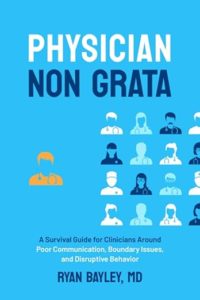Job Crafting – The Art of Thriving At Work (Part Three)

Closing The Gap Blog – September 2019
Welcome to the last installment of our three part series on job crafting for physicians. In case you missed the first two articles, job crafting refers to an evidence-based process for taking proactive steps and actions to redesign what we do at work – essentially changing tasks, relationships, and perceptions of our work to improve our experience. In Part One and Part Two, we looked at task crafting and relationship crafting respectively.
In this final article for our series, we will explore cognitive crafting. Whereas task crafting and relationship crafting are about altering what we do “out there,” cognitive crafting is about turning inward and examining our attitudes, judgments, and perceptions of our work while also seeking greater value and meaning.
As professional problem solvers, it is natural for us physicians to analyze the system and those around us, looking for what is wrong and why. While this can be constructive at times, we know that under chronic stress our brains actually begin to approach this problem solving differently – becoming more reactive, negatively biased, ruminative, and less effective. The constant demands for our time and attention, combined with the very real problems of the current healthcare system create a perfect storm where our inner voice fixates on dissatisfaction and frustration, often at the cost of being able to engage in valued action and connect with that which is meaningful. Changing our perception, and learning evidence-based skills to counter the changes our brain experiences under chronic stress can dramatically improve our experience.
And let us be clear, this is not about telling ourselves the glass is half full or engaging in “Polyanna-ism.” Nor it is about turning blame inward. It is, however, about recognizing the neurocognitive fact that we truly create our own experience of our world.
After all, the things that happen during our workday are nothing more than stimuli, captured by our five senses. They have no inherent meaning until our brain creates that meaning. It is our mind that must decide what does this event or interaction mean? Is it a threat? Do I have resources to cope or mitigate? Is this fair? Have I been wronged? What does this say about the future? And all of those layers of interpretation are colored by a whole set of beliefs, rules, judgments, attitudes, biases, assumptions, and memories of which we often rarely consciously aware of.
So the first step in changing our perception is to become aware of it. A particularly effective exercise is to have physicians keep a journal for a couple of days of their stressful events and interactions. We then go through these events, and have the physician first simply describe, as a third-person observer, what happened. Then we look at what thought the mind served up in that situation. Also, what emotion showed up. While breaking experiences down like this might seem artificial, it is very powerful.
Most physicians will quickly see patterns. A whole host of thoughts reveal themselves about what is right, what should or shouldn’t occur, how others must act, what we as physicians are entitled to for all of our hard work, what it means to say no, etc. And instead of questioning whether these thoughts are right or wrong, or rational or irrational, we ask another question. When you spend a lot of cognitive and emotional energy engaging with these thoughts, how workable is that? Does doing so improve the situation? Are there any repetitive thoughts or beliefs that if you were willing to hold them a bit more lightly, it would free you up to engage in valued action elsewhere?
Whether you call this skill noticing, mindfulness, or self-awareness, it is the first part of cognitive crafting. The second part is turning your attention to valued action and meaning. When we spend less time tangled up in the patterns above, it frees us to apply ourselves differently and focus more on cultivating meaning, purpose, and vitality. Take a moment and answer for yourself:
Name and describe a positive experience you had this week!
Despite the challenges and distractions, where do you experience meaning or connection in your work?
When you are being your best self, what does that look like? What values are you living when you do that?
In the last week, what has been an achievement, no matter how small?
How do you want to grow and be challenged?
When we turn our attention to value and meaning, we engage the parts of our brain that are more constructive and better capable of meaningful problem solving, rather than rumination and circular thinking. We often find that in fact there are meaningful aspects of our work, and many opportunities to savor or grow these despite the myriad of challenges we also face. Changing our attention is not about ignoring the bad, but rather taking it all in. It is about also perhaps spending less time asking who is responsible for what is wrong, and instead asking who is response-able?
These two skills – becoming mindful of our mindset and cultivating attention around values and meaning – are so effective for job crafting because they are the basis for professional resilience. It has been shown repeatedly in research that cultivating these two skills in high-performing professionals can improve performance and lower burnout, depression, and suicide, particularly for those who work in high stress / low control environments. In fact, some of the most impressive research favoring cultivating these skillsets comes from the US military and is now an integral part of training for military leadership. It works on the battlefield in Iraq and Afghanistan, and it works on the battlefield that is practicing medicine in today’s toxic healthcare environment.
If you want to take a deep dive into how you can cultivate greater resilience and make meaningful changes to your work as a physician, schedule an introductory consultation here!
 One instance of being labeled a poor communicator, uncivil, or disruptive can wreak havoc on your career.
One instance of being labeled a poor communicator, uncivil, or disruptive can wreak havoc on your career.